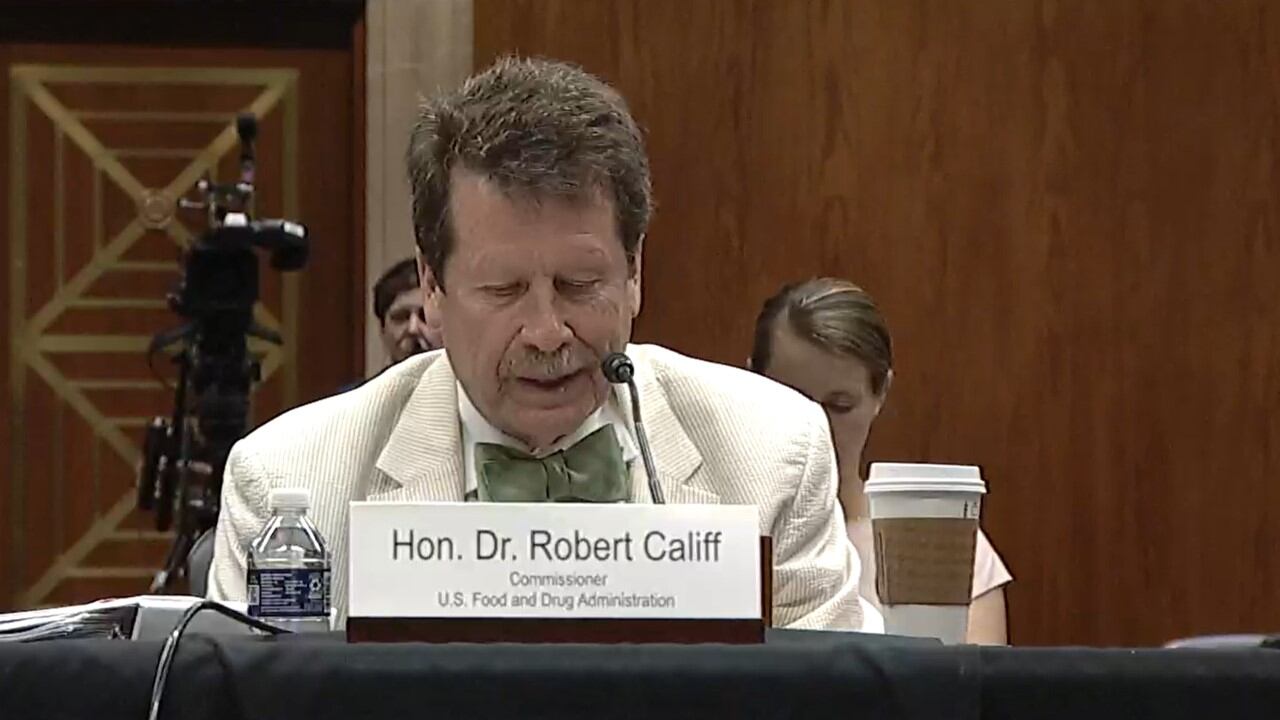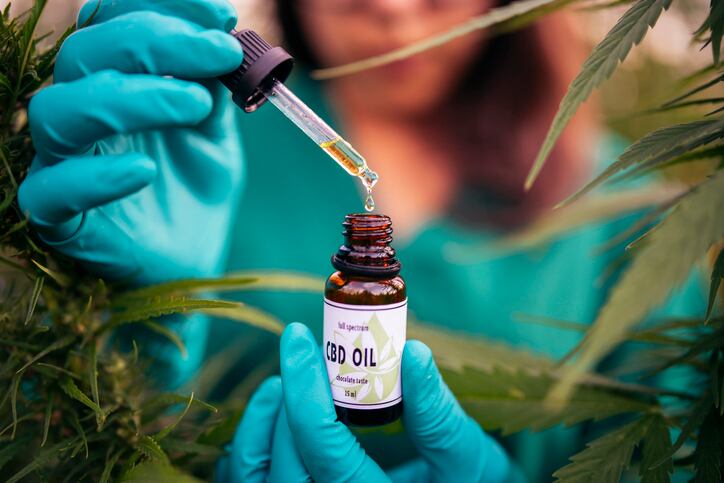Called before the Senate Appropriations Subcommittee on Agriculture, Rural Development, Food and Drug Administration and Related Agencies July 20 to respond to “serious concerns” about the priority that FDA gives food safety and what subcommittee chair Sen. Tammy Baldwin, D-Wisc., described as “missteps that have led to outbreaks or critical shortages and individuals getting sick," FDA Commissioner Robert Califf acknowledged the agency’s food program is “stressed” and in need of reform.
“The foods program is staffed by highly dedicated people – I can’t stress enough how hard they work and the depth of their knowledge – but they’re working in a sub-optimal environment that needs to be reformed,” Califf said.
He explained in a statement released the night before the meeting that “while America’s food supply is safe, and our Foods program experts have significantly contributed to the availability of more nutritious food options for consumers, the program has been stressed by the increasing diversity and complexity of the nation’s food systems and supply chain.
“Fundamental questions about the structure, function, funding and leadership need to be addressed. The agency’s inspection activities related to the program also need to be evaluated, particularly in light of stresses related to the COVID-19 pandemic.”
As such, he told members of the Senate subcommittee, “we’ve initiated a full review of the foods program” that will be led by the Reagan-Udall Foundation, which he described as an independent partner organization for the agency.
The foundation will have 60 business days from initiating the review to report its findings to FDA, which Califf said he is committed to addressing and communicating publicly in a “timely manner.”
FDA won’t wait for the assessment to act
While FDA awaits the results of the assessment, Califf said he will begin addressing several “key issues” that he has identified since returning to FDA in February.
These include hiring and retaining food program staff, which he said, “has long been a concern,” and addressing supply chain failures throughout the pandemic and more recently related to the infant formula shortage.
Upgrading the agency’s technology and digital footprint could help with both.
‘The foods program must update its technology and modernize its work processes to enable its workforce to be maximally productive – using machine learning and virtual methods to keep up with the vast and rapidly expanding foods ecosystem,” Califf said.
He also wants to better balance FDA’s focus on food safety and work on nutritional science and labelling.
“Food contamination recall events will always capture headlines,” and even one such event is too many, but providing consumers with information to make healthy dietary choices and facilitate industry reformulation is also important, he explained.
Is more money the answer?
FDA’s review will no doubt reveal challenges that the agency will argue need additional funding, and while members of the subcommittee said they want to support the agency they also doubted whether throwing money at the problem was a valid solution.
“An easy explanation [for the agency’s problems] is that FDA does not have the resources or personnel to oversee such a massive industry. There may be some truth to that, but there is more to the story,” Baldwin said.
“Since the passage of the Food Safety and Modernization Act, or FSMA, this committee has provided the FDA with hundreds of millions of dollars in increases for food safety, yet inspections continue to decline and outbreaks remain,” she said. So, “additional resources are not the only answer.”
Lessons from the private sector
To suss out what other solutions might be appropriate, Baldwin pressed FDA Deputy commissioner for Food Policy and Response Frank Yiannas, who came to the agency after working with major food corporations – giving him a unique perspective from both sides of the table.
Drawing from his experience in private sector, Yiannas suggested three ways FDA could improve its oversight of food.
The first is making food safety not just a priority, but a part of the culture, which he acknowledged may sound “soft,” but which he said can be hard.
Second, being “ruthlessly committed to continuous improvement, modernization and reinvention,” which Yiannas said he is helping FDA embrace through the Smarter Food Safety program that he launched.
And, finally, setting high performance expectations and then clarifying roles, responsibilities and setting performance standards to achieve those goals so that there is no duplication of effort – a recommendation that, while not endorsed in the hearing by Yiannas, on the surface aligns with calls by the Consumer Brands Association and others to create a food deputy commissioner to oversee the three divisions of FDA that currently manage food.
FDA could move faster
The FDA officials gathered in front of the subcommittee also addressed criticism that it is slow to address food safety threats even as it is quick to do so on the drug side.
Sen. John Hoeven, R-N.D., asked why it took FDA months after learning about contaminated infant formula to inspect the facility where it was made and then additional time to act against the facility when the agency’s response to a shortage of IV saline in Puerto Rico in 2018 was “near instantaneous.”
Responding to a follow up question from Baldwin about FDA’s reaction time, Yiannas said “there’s more we can do,” especially around understanding the root cause of foodborne outbreaks so that they can be prevented in the future.
“We can go faster,” but “we’ve improved,” he said.
He explained since he joined FDA three years ago the agency has sped up its response time so that now it is often on the scene as fast as 24 hours or shortly thereafter. It also has doubled and nearly tripled the publication of outbreak investigation reports – some going out in as little as six weeks – so industry can learn from what happened.
“Having state that, there’s more we can do and in December, under the auspices of our new Era of Smarter Food Safety, we published a report that we’re calling the foodborne outbreak response and improvement plan,” which was drafted with the University of Minnesota School of Public Health, he added.
Transparency is essential
FDA’s “top to bottom” review of its food program piqued the interest of industry representatives who testified at the hearing, but they emphasized for the review to be most effective it must be fully transparent.
It also needs to be conducted by an independent organization, argued Consumer Reports Director of Food Policy Brian Ronholm who questioned whether the Reagan-Udall Foundation was sufficiently separate from FDA given its objective is to support the agency’s mission.
“We certainly are eager to learn more details about how the Foundation will ensure that the process is independent, and we’re also eager to learn more about how the foundation will ensure the transparency of their process and how they intend to engage with internal stakeholders within the FDA … and also how they intend to engage with external stakeholders, including consumer groups, industry, state and local regulators,” he said.
He added that Consumer Reports, the Consumer Brands Association and others are eager to participate in the review.
CBA vice president of product policy Sarah Gallo, who also testified, agreed with Ronholm that news of the agency’s food program review is “welcome,” and said CBA is “encouraged that they’re aligned in our thinking that there needs to be a holistic evaluation of what’s going there and how modernization could occur.”
She also agreed that CBA, like Consumer Reports, will watch the scope of the review “very closely.”




